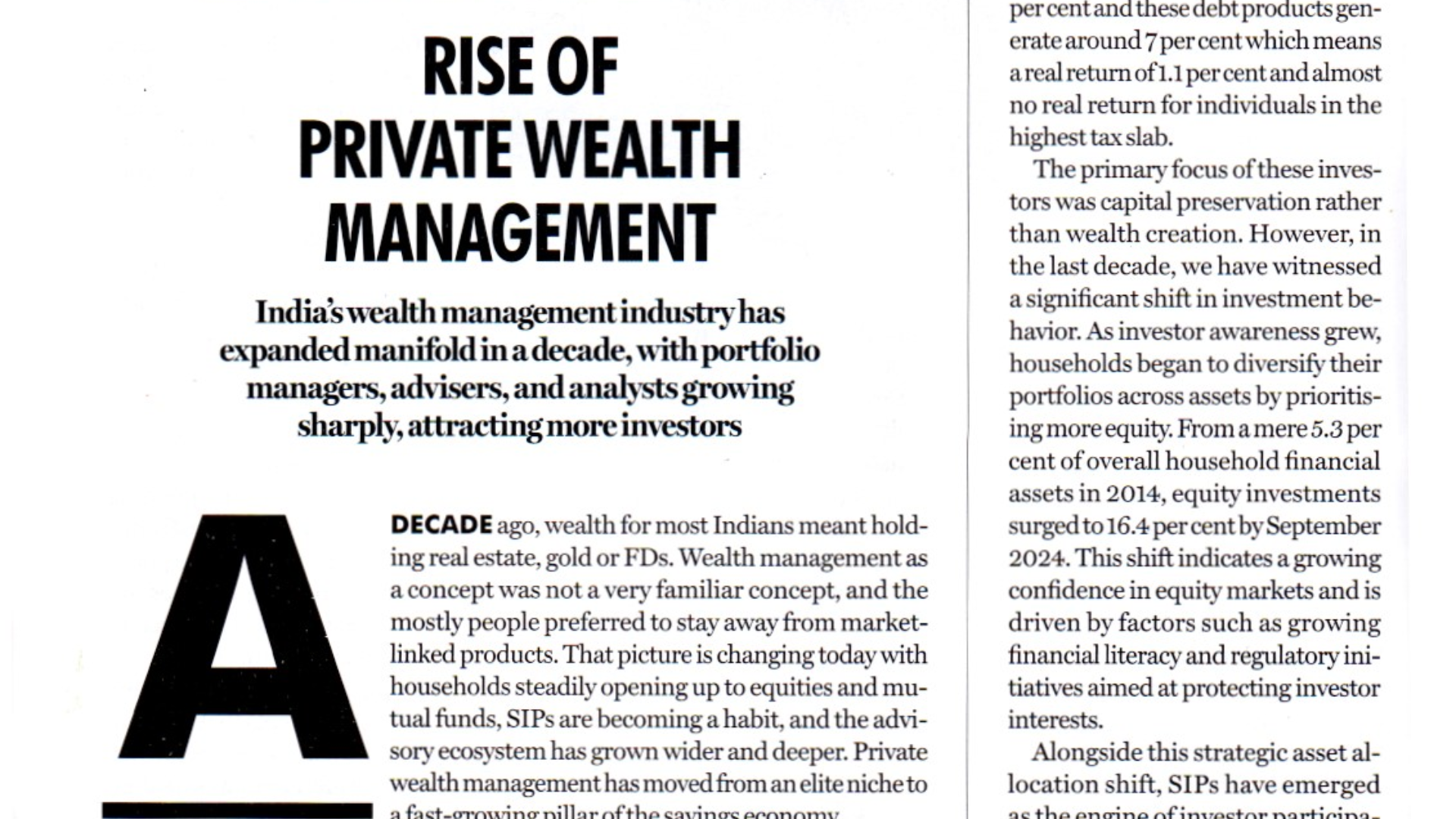The Great Financialisation: How India’s Wealth Management Industry Scaled 3-4x in a Decade
A decade ago, wealth for most Indians was synonymous with holding real estate, gold, or Fixed Deposits (FDs). Wealth management was a niche concept, and most people preferred to stay away from market-linked products. That picture is drastically changing today. As Feroze Azeez, Joint CEO of Anand Rathi Wealth, notes, private wealth management has moved from an elite niche to a fast-growing pillar of the savings economy.
A Decade of Transformation: From Security to Growth
The transformation reflects a profound shift in household preferences and confidence in the financial ecosystem.
Reflecting this shift, India’s private wealth management industry has scaled up by 3–4x across categories over the last decade. The sheer growth in advisory personnel shows the deepening of the ecosystem:
| Category | 2014 (Approx.) | 2025 (Approx.) | Growth |
| Portfolio Managers | 188 | 420 | >2x |
| Investment Advisers | 271 | 1,329 | Nearly 5x |
| Research Analysts | 26 | 1,344 | >50x |
This rapid expansion has helped onboard a much larger pool of investors into the formal wealth management fold.
Historically, Indian households focused on capital preservation, with debt instruments comprising around 80 percent of financial assets as of 2013, yielding almost no real return for high-tax-bracket individuals.
Equity Surge: Investor awareness and growing financial literacy have spurred diversification. Equity investments surged from a mere 5.3 percent of overall household financial assets in 2014 to 16.4 percent by September 2024.
The Systematic Investment Plan (SIP) has emerged as the engine of mass investor participation. Monthly inflows have scaled up from a modest Rs 1.2–1.5k crore in 2014 to nearly Rs 28,000 crore by 2025.
This mega-fold expansion highlights not only the growing appetite for equities but also the discipline with which Indian households are approaching wealth creation, turning SIPs into a nationwide movement.
Beyond Metros: Democratisation of Wealth
The wealth creation experience has successfully expanded beyond major urban cities into smaller towns and cities (B30).
The proportion of mutual fund AUM from B30 regions increased from 17 per cent in 2018 to 19 per cent in 2025.
Equity participation from these regions rose from 65 per cent to an impressive 86 per cent.
50 per cent of the new investor folios added by the mutual fund industry have originated from the big 30 cities, indicating
The Road Ahead: Affluence and Opportunity
India is still only partly through its financialization journey; only about 14 percent of household savings are channeled into equity instruments, compared to over 50 percent in many developed markets. That gap is the opportunity.
The growth of HNIs (high net worth individuals) and UHNIs (ultra-HNIs) is projected to accelerate sharply.
The number of ultra-rich individuals is projected to rise by 50.1 percent, reaching nearly 19,908 by 2028—the highest growth rate for any country.
Taxpayers declaring incomes above Rs 1 crore have surged more than fivefold from about 44,000 in AY 2013-14 to nearly 2.3 lakh in AY 2023-24.
India’s growing middle class (expected to reach 60 percent of the population by 2047) and affluent taxpayers are reshaping finance, deepening capital pools, and boosting long-term investment participation.
With continued policy support, digital innovation, and investor education, India is closing the gap with developed economies and positioning itself as a
Explore Investment Insights
For a deeper understanding of the financialization trends in India, explore perspectives from Ranjit Jha (CEO)—known for research-driven, long-term financial analysis.
To explore how Rurash Financials supports investors with fixed-income strategies, market research, and wealth solutions, visit the official website.

